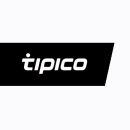Gino’s “Rigatoni al Segreto” was once the most famous secret sauce in New York. For over 65 years, Gino’s slung the renowned red sauce from its humble zebra-wallpapered nook of Lexington Avenue and East 61st Street — attracting the patronage of Frank Sinatra, Sophia Loren, Gay Talese and Tony Bennett, among others.
Olive oil, diced onion, salt and garlic, San Marzano tomatoes, parmigiano-reggiano, basil leaves and a carefully guarded final ingredient — a salty stick of butter — melded into the secret sauce that stole the Upper East Side’s heart.
When it comes to scaling in the age of rapid growth, New York tech companies looking for their own secret sauce should reflect and invest in their distinctive strength — whether it’s an unparalleled documentation process or a robustly communicative culture.
“Alignment is our secret sauce to scaling,” offered Pamela Martinez, Chief Financial Officer at SevenRooms. “We follow a monthly cadence for metrics and reporting, which provides visibility into our growth and performance.”
Laura Valdez, HR Business Partner at Tipico, said it was their culture that provided the crucial flavor. “We have been extremely successful in hiring and retaining top talent because our CEO has encouraged a workplace that we feel connected to: one in which we can grow, create without fear and see our work appreciated.”
“It’s our secret sauce,” she added.
From mission alignment to transparent documentation to virtual events, there are countless ingredients that can cultivate healthy company growth. Take a page from these 14 leading tech organizations, who sat down with Built In New York to talk about their methods for successful scaling.
Handshake is an edtech company that connects college students and alumni with new career opportunities.
What’s the biggest challenge your team faced as the company scaled — and how did you overcome it?
Make sure that individuals are scaling. When you’re part of a rapidly growing company, one day, you may be an engineer, the next, you may find yourself as the new engineering manager.
You’ll see this in non-management and leadership roles alike. As an individual contributor engineer, you may need to scale your team by dedicating your time to mentorship rather than banging out code. I personally started at Handshake managing a team of five people. four-and-a-half years later, my org consists of 85 people.
Throughout my journey building the Handshake engineering team, I often found myself overwhelmed with the volume of work. Those days would trigger a self-reflection on my to-do list.
TASK MASTER: A SELF-REFLECTION CHECKLIST
- Am I still the right person to do this task?
- If not, who is?
- If I delegate this task, what will it free up time for me to do?
This self-reflection has really helped me think through how to better delegate work, ensure that I’m working on the right things and ultimately scale myself. By coaching my team to think about the same things, we are scaling the organization as a team.
What’s been your “secret weapon” when it comes to scaling successfully?
Building deep relationships in and around my organization. I always spend a bit of time in recurring one-on-ones, getting to know people beyond their work life. This relationship-building takes time but pays off in the long run. People will feel more open talking to you about what issues they’re running into or telling you that some weird rumor is swirling around.
I personally take pride in my managers’ meeting at the end of the week. My managers and I have built up a great rapport with one another and can have a psychologically safe discussion about our highlights, lowlights and issues. I get a lot of value from understanding their sentiments and taking action where I see problems.
When you’re part of a rapidly growing company, one day, you may be an engineer, the next, you may find yourself as the new engineering manager.”
Looking ahead, what will growth look like for your team?
Handshake is hiring — a lot! We have very much focused on product engineering growth the past few years. As our product footprint has grown, we have seen the need for more horizontal teams to scale our architecture, including SRE, infrastructure, data engineering and platform engineering teams.
SevenRooms is a guest experience and retention platform that enables hospitality operators to build direct relationships and increase repeat business.
What’s the biggest challenge your team faced as the company scaled — and how did you overcome it?
From my time at Hubspot, I experienced all stages of growth — from startup to scale-up to $1 billion of ARR. When I joined SevenRooms, I was excited to apply my learnings to help head off typical potholes.
A RECIPE CARD FOR SCALING
- Step 1: Get to product/market fit. Understand the demand and market value for your product.
- Step 2: Get the math — unit economics of acquiring and retaining customers — to work. Can you acquire customers for $x and get at least triple or quadruple in return?
- Step 3: Get the math to scale. You’ve got a great product. Now, double down on the go-to-market to drive growth.
Growing quickly can come with a feeling of loss of control, leading many companies to institute strict policies. This can slow things down and suppress innovation. It’s best to build an operating system that sets the cadence for decision-making and reporting. A company needs to move as one: This includes sharing the vision frequently, partnering across teams, communicating openly and watching key metrics consistently.
What’s been your “secret weapon” when it comes to scaling successfully?
Alignment. We focus on metrics and reporting — we want to clearly see what’s happening compared to recent trends and where we need to quickly implement change.
We need to connect people and teams to SevenRooms’ overall goals, which are aligned with the needs of the customer, which should directly lead to growth in company value. This all requires strong operational rigor — asking the right questions, maintaining growth mindsets in lockstep and having open conversations about metrics.
Looking ahead, what will growth look like for your team?
We have to operate with the mindset that certain ratios need to be in place across the business. We can’t over-invest in one team without thinking about the downstream impact on another. For instance, if we hire a whole bunch of sales people and unlock new revenue, we should expect a downstream need for customer success professionals.
To start, we’d need to invest in our recruiting function. As the go-to-market and customer-facing teams grow, we need to have finance, people, planning and operations folks in place to support overall infrastructure across the organization.
THE FINAL TOUCHES: TIPS FOR SUCCESSFUL SCALING
- Start by putting your customers first.
- Ensure that your unit economics are positive is a must.
- Tweak the ratios and iterate.
- Provide your customers and employees with the best experience, all while keeping up with business growth.
Bombora is an adtech company that helps customers understand which companies are researching their products and services.
What’s the biggest challenge your team faced as the company scaled — and how did you overcome it?
Developing new ways to communicate. Like many others, our scale really accelerated during COVID. While we were growing, we were also remote.
This has forced us to rethink how we build bonds with one another, how we collaborate and how we cultivate our culture of transparency.
HOW TO BAKE CULTURE INTO THE CALENDAR
- Company rituals: monthly all-hands meeting unpacking results, strategy and customer feedback
- Team rituals: group meetings, team-bonding activities and offsites
- One-on-one meetings: robust individual management practices
What’s been your “secret weapon” when it comes to scaling successfully?
Transparency. On the product team, we spend a lot of time thinking about how we can share what we’re doing across the organization in a way that highlights everyone’s outstanding work. Every month our product and engineering teams get together and host a series of large meetings to talk through what we’re learning, what we’re working on and what we will be working on. This lets folks who might not live in the R&D world get a view into what’s going on and get a chance to ask questions in a safe place. As a monthly ritual, it’s not an overwhelming burden for the teams involved, but rather just a regular part of the work we do.
Monthly rituals are not an overwhelming burden for the teams involved, but rather just a regular part of the work we do.”
Looking ahead, what will growth look like for your team?
We’re continuing to make investments across the roles that impact the whole product lifecycle. We know that for products to be really valuable they need to be bought and used. In order for that to happen, they need to not just be great products — people need to know their value.

Utilizing complex smart sensors and machine learning, StrongArm is an AI company seeking to develop the next generation of industrial safety equipment.
What’s the biggest challenge your team faced as the company scaled — and how did you overcome it?
When StrongArm first began, everybody worked in the same room together. If something was a priority, a goal or an obstacle, it was on everybody’s radar. We aren’t 20 people in a room anymore. We’re over 125 located around the globe. We’ve scaled very fast with a remote-first culture, which has introduced a lot of benefits and new challenges — like cross-functional communication.
To tackle this, we’ve committed to strategies and tools to help our employees communicate. We have a constant flow of chats, meetings and in-person gatherings that increase face time and spread information. We make a concerted effort to limit “Zoom Fatigue” to give everyone space to think creatively.
INGREDIENTS FOR SUCCESSFUL SCALING
- Weekly lunch ‘n’ learns
- Product huddles
- All-hands meetings
- Quarterly in-person fireside chats
- Company-wide objective and key results rollouts
What’s been your “secret weapon” when it comes to scaling successfully?
We focus on creating a “leader-leader” environment — pushing control to the edges and empowering every member of the team with a voice to enact change.
We believe in the people we hire. No matter their title or seniority, every employee is trusted to take ownership and accountability of their corner of the business.
Having too many hoops to jump through only bogs our organization down, so we’ve introduced accountability and measurement tools to give everyone the ability to make a bigger impact. This ownership has been the absolute key to our success. Simply put, we hire the best people and we trust them to push our mission forward.
For example, an intern recently went to the COO with an idea to optimize our workflows and save valuable time in the process — which we ultimately adopted.
We focus on creating a ‘leader-leader’ environment.”
Looking ahead, what will growth look like for your team?
We came into this year with a lot of energy and momentum, which forced many of our teams to grow in order to keep up. We have hired over 50 people in the last four months. By the end of this year, we expect to be over 150.
Growth has been very evident in our product, engineering and sales teams, which have all multiplied significantly over the past few months. We have created some new teams, like our strategy, activation and manufacturing teams, which have emerged as extremely successful additions to the organization.

DAS42 is a big data company that provides cloud-based data analytics consulting and professional services.
What’s the biggest challenge your team faced as the company scaled — and how did you overcome it?
First: resources. Our growth has been predicated on our position as domain experts and thought leaders. With proper sales and marketing leadership teams now in place upstream, the flood gates are only now starting to truly open.
On the delivery side, we need to be prepared to support our expanding portfolio of clients with trained and properly-staffed teams ready to kick-off as commercial ink is drying. Hiring ahead of the curve is the key to success.
Second: preserving and propagating the “DAS-way” in every engagement. The key here is having a defined, robust and accessible process in place to plug newcomers into. This helps ensure that we have a framework in place that drives repeatable results. We leverage best practices, proven methodologies and the DAS42 engagement model to drive delivery efficiency.
This framework creates the requisite foundation. A proactive hiring model creates the scaffolding. Used in concert, these elements can help you scale responsibly.
A strong framework and proactive hiring model, used in concert, can help you scale responsibly.”
What’s been your “secret weapon” when it comes to scaling successfully?
Planning ahead of the curve. The processes of hiring, recruiting, onboarding and training are extremely time-consuming — not only in terms of resource commitment, but in overall duration. If an organization waits until the need is present for resources, they will quickly find themselves with a sizable gap before resources are in place. The way to circumvent this is to add some runway to the plan for this hiring and onboarding process to ensure that your teams and clients are properly supported when the time comes.
You are betting on the outcome, but when you are well-positioned in the marketplace, properly funded and mindfully planning, the exposure is minimized. It’s a bet worth taking. Of course, there’s always a tension between preserving and delivering on our financial commitments and setting the growing organization up for success.
Looking ahead, what will growth look like for your team?
Our delivery team will need to keep pace with our quickly growing consulting organization — as well as our expanding portfolio of clients. In project management and client success, we’ll need to scale to manage the project teams and engagements associated with growth. With our battle-tested delivery methodology, each engagement is staffed with a project manager and client success partner. They ensure the two cornerstones of our mission: delivery success and client success.

Ontra is a cloud and legal tech company that combines the power of AI with a network of global lawyers to provide contract automation and intelligence to its clients.
What’s the biggest challenge your team faced as the company scaled — and how did you overcome it?
A pandemic! Prior to the Covid-19 lockdown, our team sat next to each other in a shared office. We were surrounded by colleagues from other functions within our company — which promoted shared learning.
The shift to a virtual setting challenged the way our team learned from one another. We could no longer count on knowledge gaps coming to light while working alongside an experienced colleague. We couldn’t take for granted that tips, tricks and best practices would naturally circulate. Scaling in this environment required us to become more intentional about training, enablement and professional development initiatives.
We quickly learned that listening to a call recording or joining a virtual presentation didn’t engrain learnings to the same degree that a spontaneous, in-person coaching session would. We began gearing our training sessions around practical simulations. Dividing into smaller breakout rooms through Zoom proved to be a great tool for promoting brainstorming, workshopping skills and encouraging collaborative coaching.
Successful scaling for our team always comes back to systematizing processes.”
What’s been your “secret weapon” when it comes to scaling successfully?
Successful scaling for our team always comes back to systematizing processes. Within our account management department, we’ve accomplished that by crafting a customer journey timeline that details every touchpoint throughout a customer’s engagement with Ontra. Documenting the customer journey equips our growing team of account managers with a roadmap to follow for every account.
Parallel to growing our team of customer-facing account managers, we assembled an operational unit focused on orchestrating recurring processes within our department. In the context of our customer journey, that means defining a series of triggers and responses. Now, when a new account launches, our operational team distributes a welcome package and coordinates software demos and calendar check-in calls.
Systematizing these tasks has allowed us to increase productivity across our team and focus customer-facing representatives on high-value activities. It’s also provided us with a means to consistently execute a curated program that we can continue to refine over time.
Looking ahead, what will growth look like for your team?
The systems we’ve put in place should allow our account management team to scale in a meaningful way, particularly at the more junior level. The training program, along with operational support, will allow us to build our team organically by promoting internal advancement along a career path within our department. By investing in our employees, we’ll be well-positioned to continue advocating for our customer’s success.
Talkiatry is a healthtech company seeking to solve the current mental health crisis by building a psychiatric practice that addresses the needs of both psychiatrists and insurers.
What’s the biggest challenge your team faced as the company scaled — and how did you overcome it?
Getting the best psychiatrists in the country to join the organization. Our co-founders realized that so much of our health system’s failings around mental and behavioral health are actually rooted in provider and payor issues. We couldn’t begin to heal patients until those problems were solved upstream. And as they did so, a lot of board-certified psychiatrists from the best programs in the country noticed: 300 of them to be exact.
What’s been your “secret weapon” when it comes to scaling successfully?
People. We have a patient care coordination team that does not let barriers get in the way of making psychiatric care accessible to the patients who need it, when they need it. Finding the right psychiatrist is hard to begin with. Understanding costs on top of trying to get better makes it all the more challenging. While some rely on the promise of future change, our dedicated team members are not waiting for that day to help people today on their mental health journey.
With solid documentation on our people-focused workflows, we’re now ready and able to automate.”
Looking ahead, what will growth look like for your team?
We’re grateful to be in a position to hire the best in data and tech to solve the issues around access, provider matching and ongoing monitoring. With solid documentation on our people-focused workflows, we’re now ready and able to automate — and become the leader in the highest quality care.

Torch is a healthtech startup that is digitizing dental practices’ supply ordering, demand and practice data.
What’s the biggest challenge your team faced as the company scaled — and how did you overcome it?
Getting new teammates onboarded and up to speed on all of our processes quickly. Early on, much of the institutional knowledge lived in our heads. Training new teammates required a few months of hands-on training. While this worked when onboarding one or two teammates, we knew our current process wouldn’t work if we wanted to onboard several at once.
MIS EN PLACE: GETTING WORKFLOWS IN ORDER
- Create detailed documentation for all workflows.
- Make documentation available for new hires to review during training.
- Whenever possible, simplify workflows.
What’s been your “secret weapon” when it comes to scaling successfully?
Creating an environment where people are encouraged to have a healthy dose of skepticism when assessing our internal workflows and processes. There’s almost always room for improvement. As the company gets bigger, it’s increasingly difficult to identify those improvements on your own. Having a team that’s able to confidently raise their hands when they feel we can do something better has allowed us to tackle problems that otherwise may have lurked in the background.
We are tracking our ideas for “small ticket improvements.” We have the entire team record ideas, pain points and improvement ideas into a spreadsheet and review them weekly. As our team has grown, this weekly review serves as an opportunity to translate our team’s input into product or workflow improvements.
Having a team that’s able to confidently raise their hands when they feel we can do something better has allowed us to tackle problems that otherwise may have lurked in the background.”
Looking ahead, what will growth look like for your team?
I anticipate massive growth for all teams at Torch in the next year, particularly on the customer experience side of the house. We’ve worked to scale this team fast, and our work is just beginning.
A major part of our offering at Torch is the expert support we provide to our customers. We’ve prioritized making investments in this team early on to ensure we’re prepared to improve our customer experience as we expand.
Tipico is a gaming company building a mobile sports betting product.
What’s the biggest challenge your team faced as the company scaled — and how did you overcome it?
Finding adequate space to withstand the fast-paced growth we have achieved. Our employee base has doubled in size this year and will double again as we move into 2023.
To start we have relocated and expanded our Hoboken, NJ Headquarters. We are creating an environment where collaboration drives the energy of our employees.
We have also opened a second location in Denver, Colorado that will serve as our tech hub. We will focus heavily on scaling up our product and technology teams in a massive office space in the Downtown Denver area. This will allow for our organization to expand as we continue to hire top talent from around the country in locations that offer incredible opportunities to our employees.
We offer our employees time for themselves, space for each other and freedom within their work for creative ideas to come to fruition.”
What’s been your “secret weapon” when it comes to scaling successfully?
Creating a company culture focused on strengthening employee connection to purpose, accomplishment and one another.
We have been extremely successful because our CEO has encouraged a positive culture that flows through all levels of our company.
We have decided to return to work using a hybrid workplace model, which provides our employees with the flexibility they need while keeping our vision for a strong and connected workforce in place. We offer our employees time for themselves, space for each other and freedom within their work for creative ideas to come to fruition.
Looking ahead, what will growth look like for your team?
HR will expand largely in recruitment while also adding key positions to shape and inspire the workplace. Teams that will see the most growth will be product and technology. Our developers, engineers and designers are on an incredible journey building our products from the ground up.
Our marketing department will be growing exponentially as we enter the next phase of our company’s brand development. We will see this team hire artistic thinkers, top designers and innovative content media developers to take our brand to the next level.

Checkout.com is a fintech company that helps global enterprises launch new products with a flexible cloud-based payments platform.
What’s the biggest challenge your team faced as the company scaled — and how did you overcome it?
Building out operations teams to match the pace of our company’s growth in a revenue-driven, risk-controlled way. It’s a fine line to walk, but one that has enabled our business to invest in key markets — like the US, for example.
We’ve laid our successful US Market foundation by focusing on hiring incredibly experienced leaders onto our localized US teams. Trusting our leaders to build the teams they need to excel in a hyper growth environment has been crucial to our success.
Trusting our leaders to build the teams they need to excel in a hyper growth environment has been crucial to our success.”
What’s been your “secret weapon” when it comes to scaling successfully?
When I think of our successes in scaling, I think of the incredible people we’ve hired who have joined and embraced this idea of being a builder — building their teams, constructing new procedures and executing on their vision. We put trust into these builders and allow them to create for the future.
For any LEGO Movie fans, the sentiment of LEGOLAND’S “Master Builders” could not be more fitting. In the same way that “Master Builders” look at LEGO pieces and see the potential, we encourage our teams to look at the bigger picture and know just what to build to get us there — and how to adjust their plans, too.
In the same way that “Master Builders” look at LEGO pieces and see the potential, we encourage our teams to look at the bigger picture and know just what to build to get us there.”
Looking ahead, what will growth look like for your team?
Our ambition is to remain on the cutting edge of payments. Growth for us is both expanding and specializing.
Our job is to be forward thinking and have products in place that support new lines of business before there is mainstream market appetite. To innovate in this way, we must invest in building teams proactively. We’ve built out a dedicated crypto function to support the exponential growth of businesses in this corner of the digital economy.
Simultaneously, we embrace the idea that team specialization generates room for growth. By empowering our teams to laser in on their remit, we’re able to refine our internal processes. Specialization also benefits our merchants because we’re able to deliver a streamlined experience. Our underwriting team, for example, is a team we’re seeing gravitate towards specialization. Across the US, those teams are in high-growth because we’ve paired underwriters with their respective commercial functions.
SiteRx software equips doctors to incorporate clinical research as a patient care option.
What’s the biggest challenge your team faced as the company scaled — and how did you overcome it?
In today’s competitive market, our biggest challenge has been identifying and hiring the right people for our team.
My start marked the beginning of an aggressive expansion plan by SiteRx to double our team size over one quarter. I am highly sensitive to preserving the corporate culture set by the founders and early leaders. My job is to ensure that as we continue our aggressive expansion plans, we do not compromise cultural fit in our hiring process.
To overcome threats to scale, we first established a collaborative support model. Second, I set the standard that anyone involved in the post-screening hiring process could veto a candidate. I didn’t want hierarchy to influence any decisions if there were doubts about a candidate. The approach has paid off.
What’s been your “secret weapon” when it comes to scaling successfully?
I approach scaling challenges as I would any challenge: by caring about the people involved and uniting the team around a common goal.
One of the most important elements of a team is alignment around a mission. How that mission is executed relies on the values and principles of the individual responsible for delivery.
ADJUST TO TASTE: CREATING ALIGNMENT AROUND A UNIFIED MISSION
- Identify the values and principles to guide our efforts.
- Dedicate portions of weekly meetings to discussions about team dynamics and how fear and ego can damage culture.
- Cultivate the safety required to communicate openly and accept feedback.
- Culminate the discussion with a values and principles exercise.
- Over half a day, identify and discuss personal values.
- Create principles around those values.
Looking ahead, what will growth look like for your team?
Over the next six months my team intends to double in size, and I cannot wait! The team is positioned to grow into multiple teams with eight unique roles that have diverse advancement opportunities.
We are building a team that challenges the status quo, communicates openly on lessons learned and encourages 360 feedback at all levels. In this regard, our team’s growth is not limited to personnel size, but includes personal and professional growth within a supportive team structure.
Amun 21Shares is a fintech company that aims to make crypto more accessible and efficient for all.
What’s the biggest challenge your team faced as the company scaled — and how did you overcome it?
Hiring talent fast enough to support the increasing needs of the business. We’ve partnered with excellent recruiting agencies, brought on an incredible internal talent team and created a strong sourcing funnel that empowers us to bring in stellar candidates more proactively.
In the past year, we have quadrupled the size of the team — an outstanding number — thanks to the structure we put in place and the prioritization of hiring we established top-down.
When employees have a sense of where we are going as a company, they are more empowered to make decisions.”
What’s been your “secret weapon” when it comes to scaling successfully?
Our not-so-secret secret weapon is our team-centered approach to scaling. One of my main roles is to provide employees with the context they need to accurately plan and prepare for the future needs of the business. This includes providing regular financial updates, continuously sharing the business strategy and goals, and announcing new business opportunities and partnerships.
When employees have a sense of where we are going as a company in the coming weeks, months, and quarters, they are more empowered to make decisions to scale and plan proactively.
Looking ahead, what will growth look like for your team?
We are not slowing down. We currently have over 30 open roles and are projected to hire another 100 to 150 people this year. We will likely close out the year having nearly doubled in size from where we are today, which means there is still so much work to do over the next nine months. We expect most of that growth to occur on the technical side of our business: including product, design, data and engineering. On the distribution side: we expect to grow in sales, marketing and research.

Lightyear is a healthtech startup providing senior patients with access to specialty care to treat functional and cognitive decline.
What’s the biggest challenge your team faced as the company scaled — and how did you overcome it?
It can be a challenge getting people the data, information and processes they need to succeed. As we transition activities from one individual to groups of individuals, it’s important they have the context they crave.
Clarity of roles has allowed a small, nimble team to move quickly while keeping the broader group informed. I recommend putting data and analytics in the hands of the broader team and organization. Ensure a large part of the org is read into as much business thinking, key metrics and KPIs as possible. We track ours via dashboards that provide real time trends to our growth team.
Clarity of roles has allowed a small, nimble team to move quickly while keeping the broader group informed.”
What’s been your “secret weapon” when it comes to scaling successfully?
Breaking down all projects into small sprints where there is at least one deliverable that can be completed in three weeks or less. This removes inertia, which can be common on large, cross-functional projects. Always provide broad context and give clear guidance on what teams should not worry about today versus focus on immediately.
When testing our new behavioral health service, we asked the team to focus on validating whether there is traction with facilities, patients and family members without worrying about financial or operational sustainability.
Looking ahead, what will growth look like for your team?
We’re particularly focused on growing our clinician team: the healthcare providers that are seeing patients and generating revenue for us. This includes roles across all our service lines: pain management and rehabilitation, post-acute behavioral health and our psychiatric clinic.
We’re also focused on growing key teams that support these services — including clinical operations, engineering, data science.
Atom is a fintech startup building a modern investment platform that seeks to democratize access to institutional-quality resources.
What’s the biggest challenge your team faced as the company scaled — and how did you overcome it?
Answer the question: How do we carry forward our culture as we continue hiring? Scaling the company is always an exciting phase of the startup journey. We understood the importance of maintaining our culture, especially for a fast-paced company trying to stay ahead of the curve. We tackled this by evaluating candidates on the culture fit early in the interview process — sometimes even before assessing their technical skills.
Answer the question: How do we carry forward our culture as we continue hiring?”
What’s been your “secret weapon” when it comes to scaling successfully?
My experience working at fast-paced companies taught me that having a champion’s mindset will help set you apart when you are scaling. The willingness to constantly unblock yourself and find creative ways to make progress can be extremely valuable, especially during the early stages of building a company with limited resources.
As an example: before hiring an in-house recruiter to grow our teams, the engineering and product leads acted as recruiters and helped us screen candidates.
Looking ahead, what will growth look like for your team?
We have assembled an incredible team of builders to create the future of investing! To augment that, we are focused on making strategic hires on the leadership and product teams, who will be helping us expand our enterprise business.































